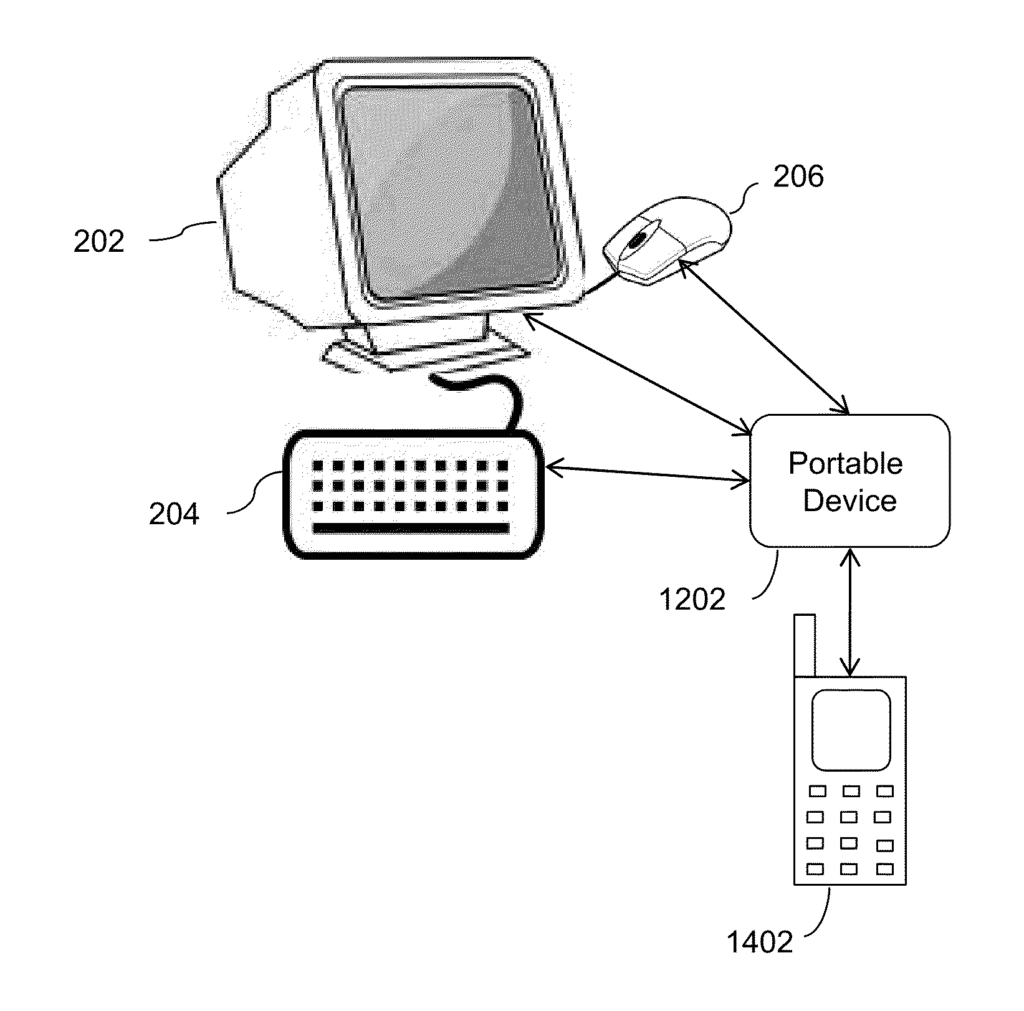ABSTRACT
Embodiments of the invention provide a portable device comprising at least one processor.
The portable device also comprises a memory coupled to the processor comprising data. Further, the portable device comprises a detector configured to detect at least one external device. At least one external device is configured to connect to the portable device. Further, the portable device comprises an interface to connect to at least one external device.
The interface is configured to transmit or receive one or more control signals excluding the data. Furthermore, the portable device comprises a controller configured to enable controlling of the portable device from at least one external device; and controlling of at least one external device from the portable device through the interface.

Portable Universal Communication Device
An Inventor: Dr. Tal Lavian
FIELD OF THE INVENTION
The invention relates to communication systems and more specifically the invention relates to devices and methods for enabling communication of a device with other devices.
BACKGROUND OF THE INVENTION
Various portable devices such as mobile phones are used for communication over the Internet and phone network.
Further, such devices enable a user to view, read, and write text, video, graphics, and so forth by using their display screens. For example, the user can read and write messages, compose emails, and so forth. In recent years, the technology of portable devices has improved tremendously. Various portable devices, such as smartphones include various hardware and software features that are generally present in personal computers. For example, various powerful mobile phone Operating Systems (OS) are available such as Windows Mobile, Apple iOS, Android, Symbian, Blackberry OS, and so forth. Therefore, the devices provide all the essential functionalities for a day to day usage for the user. However, the devices have a drawback in terms of the size of the display screens. Generally, the form factor of the portable device is such that it is easier to carry and handle by the user. As a result, the size of the keypad and display screen is also limited, which makes the use of display difficult for the user. For example, the user may be required to zoom webpages to read them on the display screen of the portable device. Further, longer viewing on a small display screen may be stressful for the user. Moreover, the use of keypad may be uncomfortable for longer usage such as typing documents with hundreds of words.
A technique disclosed in U.S. Pat. No. 5,880,732
A technique disclosed in U.S. Pat. No. 5,880,732 assigned to Telefonaktiebolaget L M Ericsson publ., enables transmission of numeric or text data from the display of a mobile telephone to a larger screen of a remote display monitor. However, this technique does not mention the transmission of graphics to the remote display monitor. As a result, the display of the mobile telephone cannot be replicated on the remote display monitor.
Another technique is discussed in U.S. Patent Application Publication No. 2010/0216508
Another technique is discussed in U.S. Patent Application Publication No. 2010/0216508 assigned to Augusta Technology Inc. This technique discusses driving an external display device using a mobile phone device. The audio and video content on the mobile phone can be merged and displayed on an external device connected to the mobile phone device. However, the technique is limited to replicating and controlling the contents on the mobile device.
U.S. Pat. No. 6,228,921 discloses an external keyboard that can be connected to a mobile device. However, the functionality of the keyboard is limited to the mobile phone and cannot be used on other devices that are connected to the mobile device.
In light of the above discussion, techniques are desired for connecting and driving external devices from a portable device.
SUMMARY
Embodiments of the invention provide a portable device comprising at least one processor.
The portable device also comprises a memory coupled to the processor comprising data. Further, the portable device comprises a detector configured to detect at least one external device. At least one external device is configured to connect to the portable device. Further, the portable device comprises an interface to connect to at least one external device. The interface is configured to transmit or receive one or more control signals excluding the data. Furthermore, the portable device comprises a controller configured to enable controlling of the portable device from at least one external device; and controlling of at least one external device from the portable device through the interface.
Embodiments of the invention
Embodiments of the invention provide a method for enabling communication among a plurality of devices. The method comprises detecting, at a portable device, at least one external device configured to connect to the portable device. The method also comprises connecting with the detected at least one external device. Further, the method comprises transceiving one or more control signals excluding the data. Furthermore, the method comprises controlling at least one of the portable devices from at least one external device; and at least one external device from the portable device through the interface.
An aspect of the invention is to connect a user device with limited display capability with an external device comprising a large display screen via a portable device. For example, connecting a mobile phone to a laptop computer.
Another aspect of the invention connects a portable device with an external device
Another aspect of the invention connects a portable device with an external device. The connected external device is configured to display the content of a screen of the portable device at the external device.
Dr. Tal Lavian offers insightful and decisive expertise as a telecommunications expert witness and network communications expert witness.